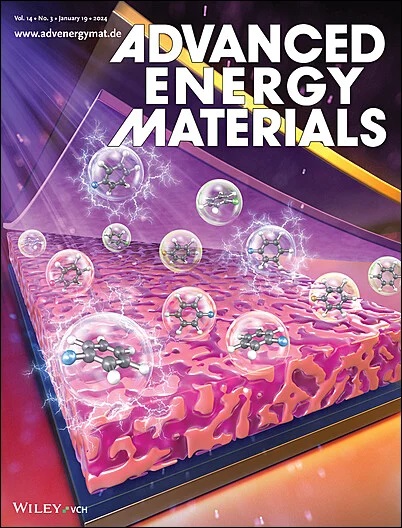Boosted Na+ Diffusion and Rock-Salt Surface Formation in O3 Cathodes via High-Entropy Doping
IF 24.4
1区 材料科学
Q1 CHEMISTRY, PHYSICAL
引用次数: 0
Abstract
Na-ion layered oxides have attracted considerable interest due to their structural and electrochemical similarities to Li-ion counterparts, positioning them as promising cathode materials for sustainable energy storage. However, O3-type Na-ion layered oxides experience severe structural distortions and phase transitions during electrochemical cycling, which significantly deteriorate battery performance. In this study, an ultra-stable O3-type high-entropy doping cathode material is developed, NaNi0.3Mn0.5Fe0.05Li0.05Ti0.05Cu0.05O2 (NMFLTC), for high-performance Na-ion battery. By partially substituted Ni of NaNi0.5Mn0.5O2 (NM) with Fe, Li, Ti, and Cu, Na+ diffusion and maintained the structural integrity of NMFLTC is successfully enhanced through the in situ formation of a high-entropy rock salt phase on the surface of the cathode material. This modification not only protects the cathode from structural degradation but also effectively mitigates phase transitions during cycling, leading to favored sodiation/de-sodiation electrochemistry and enhanced structure stability. Attributed to its structural superiorities, the high-entropy doping layered oxide cathode maintains 85.9% and 73.7% capacity retention at 0.1 C and 0.3 C after 200 and 600 cycles, respectively, which marks a significant improvement over traditional undoped NM cathodes. The proposed facile synthesis strategy enables the high entropy cathode material with possibility for large scale production, holding great promises to be utilized for practicalization.

高熵掺杂促进O3阴极中Na+扩散和岩盐表面形成
钠离子层状氧化物由于其结构和电化学与锂离子的相似性而引起了相当大的兴趣,将其定位为有前途的可持续能量存储正极材料。然而,o3型钠离子层状氧化物在电化学循环过程中会发生严重的结构扭曲和相变,严重影响电池性能。本研究开发了一种用于高性能钠离子电池的超稳定o3型高熵掺杂正极材料NaNi0.3Mn0.5Fe0.05Li0.05Ti0.05Cu0.05O2 (NMFLTC)。通过Fe、Li、Ti和Cu取代NaNi0.5Mn0.5O2 (NM)中的部分Ni,通过在正极材料表面原位形成高熵岩盐相,成功地增强了Na+的扩散并保持了NMFLTC的结构完整性。这种修饰不仅可以保护阴极免受结构退化的影响,还可以有效地减轻循环过程中的相变,从而产生有利的钠化/去钠化电化学和增强的结构稳定性。由于高熵掺杂层状氧化物阴极的结构优势,在0.1 C和0.3 C循环200次和600次后,高熵掺杂层状氧化物阴极的容量保持率分别为85.9%和73.7%,与传统的未掺杂纳米阴极相比有显著提高。所提出的简易合成策略使高熵正极材料具有大规模生产的可能性,具有很大的实用化前景。
本文章由计算机程序翻译,如有差异,请以英文原文为准。
求助全文
约1分钟内获得全文
求助全文
来源期刊

Advanced Energy Materials
CHEMISTRY, PHYSICAL-ENERGY & FUELS
CiteScore
41.90
自引率
4.00%
发文量
889
审稿时长
1.4 months
期刊介绍:
Established in 2011, Advanced Energy Materials is an international, interdisciplinary, English-language journal that focuses on materials used in energy harvesting, conversion, and storage. It is regarded as a top-quality journal alongside Advanced Materials, Advanced Functional Materials, and Small.
With a 2022 Impact Factor of 27.8, Advanced Energy Materials is considered a prime source for the best energy-related research. The journal covers a wide range of topics in energy-related research, including organic and inorganic photovoltaics, batteries and supercapacitors, fuel cells, hydrogen generation and storage, thermoelectrics, water splitting and photocatalysis, solar fuels and thermosolar power, magnetocalorics, and piezoelectronics.
The readership of Advanced Energy Materials includes materials scientists, chemists, physicists, and engineers in both academia and industry. The journal is indexed in various databases and collections, such as Advanced Technologies & Aerospace Database, FIZ Karlsruhe, INSPEC (IET), Science Citation Index Expanded, Technology Collection, and Web of Science, among others.
 求助内容:
求助内容: 应助结果提醒方式:
应助结果提醒方式:


